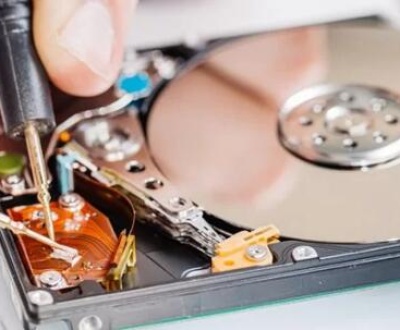In the digital age, the concept of data deletion is both simple and complex. When a file is deleted, the immediate assumption is that it is gone for good. However, the reality is often more nuanced. Understanding what happens to deleted files, especially in terms of recoverability, is crucial for anyone who uses computers or digital storage devices.
File Deletion
When a file is deleted from a computer, several things happen behind the scenes:
File System Marking: Most operating systems (like Windows, macOS, and Linux) do not immediately erase the file’s data from the storage medium. Instead, they mark the space occupied by the file as available for new data. The file is essentially hidden from the user’s view, but its data remains intact until it is overwritten.
Recycle Bin/Trash: On many operating systems, deleted files first go to a temporary holding area called the Recycle Bin (Windows) or Trash (macOS). Users can easily restore files from these locations, which acts as a safety net against accidental deletions.

Permanent Deletion: When files are removed from the Recycle Bin or Trash, the operating system typically marks them as permanently deleted. This action informs the system that the space occupied by these files can be reused. However, the data itself remains on the disk until new data overwrites it.
Data Storage and Recovery
To comprehend file recovery, one must understand how data is stored on hard drives:
Hard Disk Drives (HDDs) store data on magnetic platters. When files are deleted, the magnetic patterns that represent the data persist until the disk is written over.
Solid State Drives (SSDs) use flash memory. They manage data differently, utilizing a process called “TRIM” that helps the drive efficiently manage space and optimize performance. When a file is deleted on an SSD, TRIM can immediately erase the data, making recovery much more challenging.
Recovering Deleted Files
Despite the complexities of file deletion, various methods exist to recover files that appear to be permanently deleted:
File Recovery Software: There are numerous software tools available designed to recover deleted files. These tools scan the storage medium for remnants of files and attempt to restore them. Their effectiveness depends on how much the data has been overwritten.
Professional Data Recovery Services: For critical data loss situations, professional services can physically access the storage device and recover data through advanced techniques. This may include opening the drive in a clean room and using specialized equipment.
Limitations of Recovery: The ability to recover deleted files decreases significantly over time. If new data has been written to the same space, recovery becomes increasingly difficult, and in some cases, impossible.
Risks of Data Recovery
While recovering deleted files can be beneficial, it also presents certain risks:
Security Concerns: If sensitive data is not securely erased, it may be recoverable by unauthorized individuals. This poses risks, especially for personal or corporate information.
Misuse of Recovery Tools: Data recovery software is powerful but can also be misused. Malicious actors may attempt to recover files for nefarious purposes.
False Sense of Security: Users might assume that because deleted files can sometimes be recovered, they don’t need to worry about secure deletion. This misconception can lead to data breaches.
Secure Deletion Techniques
For those concerned about permanently erasing files, secure deletion methods are available:
File Shredders: These software tools overwrite files with random data multiple times, making recovery virtually impossible.
Full Disk Encryption: Encrypting a drive before data is stored ensures that even if data is recoverable, it cannot be accessed without the encryption key.
Physical Destruction: For highly sensitive data, physically destroying the storage medium (e.g., shredding a hard drive) guarantees that data cannot be retrieved.
Understanding the nuances of file deletion and recovery is essential for managing data securely. Users should adopt best practices for data management, especially when dealing with sensitive information. By using secure deletion methods and being aware of the risks associated with data recovery, individuals and organizations can protect their information and mitigate potential data loss.
Additional Considerations
Backup Solutions: Regularly backing up data can prevent the need for recovery altogether. Utilizing cloud storage or external hard drives can ensure that files are safe even if they are deleted from the main device.
Data Management Policies: Organizations should implement clear data management policies that include guidelines on data deletion and recovery. Training staff on these policies can help minimize risks.
Keeping Software Updated: Using up-to-date software for file recovery and secure deletion can improve the chances of successful data management.
By understanding these concepts, users can make informed decisions about their data, balancing the need for accessibility with the necessity of security.
About us and this blog
Panda Assistant is built on the latest data recovery algorithms, ensuring that no file is too damaged, too lost, or too corrupted to be recovered.
Request a free quote
We believe that data recovery shouldn’t be a daunting task. That’s why we’ve designed Panda Assistant to be as easy to use as it is powerful. With a few clicks, you can initiate a scan, preview recoverable files, and restore your data all within a matter of minutes.
Subscribe to our newsletter!
More from our blog
See all postsRecent Posts
- Data recovery salt lake city utah 2025-04-18
- Data recovery sacramento 2025-04-18
- Data recovery miami 2025-04-18

 Try lt Free
Try lt Free Recovery success rate of up to
Recovery success rate of up to









